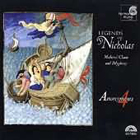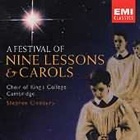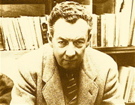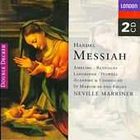There are always plenty of Christmas-music roundups this time of year. This one's different. The others usually focus on the newest offerings. Nothing I've gotten this year has really struck a chord, but there is no shortage of favorites from years past that have proven their merits and held up over time. It is those in the classical realm, where trends matter least; and choral, because it's sacred choir music that's at the heart of the celebration of Christmas, that are listed below.
Ancient
If you want some Christmas music you don't already know by heart, just look further back in history.The early music movement of the past half-century has unearthed many long-forgotten masterpieces from the Medieval and Renaissance eras.
Sequentia: Aquitania: Christmas Music from Aquitanian Monasteries (12th century) (Deutsche Harmonia Mundi)
This was Sequentia's second album of Aquitanian Christmas season music, following on the heels of the much-praised Shining Light. Aquitania was a large, independent duchy (in what's now France) that had the oldest Western European monastery, founded in the 4th century, and a strong tradition of liturgical music that's been preserved in ancient manuscripts. Alternating arrangements for male or female voices with a few instrumental adaptations of material from Aquitanian sources keeps the music from getting stuck in a rut of sound-alike settings. One non-Aquitanian piece from the 11th century provides context. Though some of this music is strict chant, and chant is the basis of some other material, in the most striking cases it's elaborated on with a second vocal line. The music is a combination of composition and improvisation, with the musicians doing their best to function as their predecessors of 700 years earlier would have. As florid as some of the vocal lines get, to 20th century ears there is a sonic purity at work here, especially in the unaccompanied vocal pieces, that has a great beauty that transcends musicological questions and speaks directly to us.
Tallis Scholars/Peter Phillips: The Tallis Christmas Mass (Gimell)
This is a significant contribution to the Thomas Tallis (c.1505-1585) catalog, with recordings of the titular piece, Missa Puer natus est nobis, and the antiphon Ave Dei patris filia, both of which until recently existed only in fragmentary form. Even now there are only three movements available for the Mass, and even parts of them had to be reconstructed. Ave Dei patris filia was similarly filled in after missing parts were found in the British Library. The Mass, based on the plainchant "Puer natus est nobis," is especially elaborate, mixing the then-modern Flemish style of imitation between voices and the older style of a long-note cantus firmus (the quoting of the chant within the texture of the more active voice parts). The music is gorgeous, celebratory, and performed with the Tallis Scholars' trademark refined and rich sound. Filling out the program are two early works, Auvidi vocem and a four-voice Magnificat.
Or, if you don't need that much Tallis but would enjoy a sampler of Medieval and Renaissance Christmas works, for the same price there's a two-CD set, Christmas with the Tallis Scholars, that features the same Mass, the anonymous Missa in Gallicantu, Jacobus Clemens non Papa's Missa Pastores quidnam vidistis , and 17 shorter pieces.
 Anonymous 4: Legends of St. Nicholas (Harmonia Mundi)
Anonymous 4: Legends of St. Nicholas (Harmonia Mundi)
The real-life person now known as St. Nicholas was born into a noble family around 300 A.D. in Patras in what's now Turkey. Orphaned, he inherited his parents' fortune but gave it away to the poor. As Bishop of Myra, he continued to exhibit great charity, performed miracles, and defended the Christians of Myra from Roman persecution. He was imprisoned and tortured by Emperor Diocletian, but was released by Constantine, the first Christian emperor of Rome. Nicholas died around 342 A.D. on December 6; after he was canonized, that became his feast day. A liturgy for his feast day was composed in the 10th century, and two of its responsory chants are here. There are also ancient hymns retelling the legends of his miracles, a song by Godric of Yorkshire (d. 1170) that's among the oldest in the English language, and polyphony from the 13th and 14th centuries. The members of Anonymous 4 also composed new monophonic settings of a 1438 prose translation of the life and legends of St. Nicholas, using "melodic formulas found in contemporary Middle English song and chant." The famous quartet's serene phrasing and euphonious blend make this an extremely pleasing listening experience for both fans of medieval music and people looking for soothing music after a tiring bout of Christmas shopping.
For a bonanza of Medieval Christmas music, get this in the four-CD box set Noel: Carols & Chants for Christmas, which also has Anonymous 4's equally excellent On Yoolis Night: Medieval Carols & Motets, Wolcum Yule: Celtic and British Songs and Carols (with harpist Andrew Lawrence-King), and A Star in the East: Christmas Music from Medieval Hungary.
Lighter Favorites
Of course, familiarity offers comfort, and the next four recordings contain many longtime favorites.  Choir of King's College, Cambridge/Stephen Cleobury: A Festival of Nine Lessons & Carols (EMI Classics)
Choir of King's College, Cambridge/Stephen Cleobury: A Festival of Nine Lessons & Carols (EMI Classics)
This offers the warm experience of an English Christmas with a complete Christmas Eve service as famously sung every year by this superbly trained choir of men and boys: prayers, readings from scripture, and 20 carols and Christmas songs old and new. The older music, much of which will be recognizable to American listeners (especially choristers) but in general not over-familiar, includes "Once in Royal David's City," "Sussex Carol," "In the Bleak Mid-winter," "God Rest You Merry, Gentlemen," "I Saw Three Ships," "O Come, All Ye Faithful," "Hark! The Herald Angels Sing," and more. Some tracks are accompanied by organ. Some of the finest contemporary English composers also contribute material, including John Tavener, Judith Weir, Thomas Ades, and John Rutter. Though at 83 minutes this spreads out to two CDs, it's priced as a single disc, and it's commendable that EMI resisted the temptation to leave out a track or two. The church acoustics are captured faithfully, full of ambiance yet quite clear.
Chanticleer: Christmas with Chanticleer and Dawn Upshaw (Teldec Classics)
Hugo Distler's harmonically imaginative recasting of "Es is ein Ros entsprungen" is the highlight of the second Christmas album by Chanticleer, a 12-man choir based in San Francisco, which uses soprano Dawn Upshaw for five effective cameos among the 16 multi-cultural items on this extremely varied disc. "Beautiful Star of Bethlehem" by Adger M. Pace (1882-1959) sounds like a cross between barbershop quartet harmonies and Appalachian folk music. "Huron Carol" is a lovely gem written by French missionary St. Jean de Brebeuf (1593-1649), originally in the Huron language but sung in English here. England, France, Wales, Canada, Spain, and Germany are also represented. Jonathan Rathbone's arrangement of "Coventry Carol" may strike some as over-dramatic and straining for effect, but it does capture the terror that underlies this lullaby: a mother is trying to keep her child quiet so that Herod's soldiers won't hear it and slay it. This is a welcome contrast to the overly familiar material on most Christmas releases, and will reward adventurous listeners.
Mormon Tabernacle Choir/Orchestra at Temple Square/Craig Jessop: A Mormon Tabernacle Choir Christmas (Telarc)
This CD shows again how reliable this longstanding large choir is. The repertoire, while largely familiar and resolutely traditional, contains a few less-heard items (notably John Jacob Niles's "Jesus, Jesus, Rest Your Head") and big, full, yet varied arrangements. Barlow Bradford's elaborate recasting of "Carol of the Bells" is especially fresh, with some striking modulations. The only serious lapse is "Pat-a-pan," annoying in any arrangement. The more symphonic arrangements of some items are thrilling in a high-calorie way ("Masters in This Hall" even includes xylophone), and are balanced by some more intimate moments.
Vienna Choir Boys: Frohe Weihnacht/Merry Christmas (Koch International Classics)
As an institution, the Vienna Choir Boys have been around for more than five centuries, and they bring more to the table than cuteness and tasteful arrangements. Their ensemble intonation and precision of tuning aren't just good by the standards of youth choirs, they're the envy of many adult groups. On the English tracks here, the boys' pronunciation isn't perfect, and no arrangements are remotely daring, but for a nicely traditional yet not highbrow experience, this disc is perfect.
The Big Boys
I refer to the composers -- true masters all -- and, to a degree, the works themselves: longer, sometimes even monumental.
 Choir of King's College, Cambridge/Stephen Cleobury - Britten: A Ceremony of Carols; Rejoice in the Lamb; A Boy Was Born (Decca)
Choir of King's College, Cambridge/Stephen Cleobury - Britten: A Ceremony of Carols; Rejoice in the Lamb; A Boy Was Born (Decca)
Surprisingly few CDs contain both Christmas items here, both using old texts (as does the non-holiday work here, Rejoice in the Lamb), so for our purposes, this fits nicely. The piquant harmonies of A Boy Was Born are extraordinary even before taking into account that Britten wrote them when merely 19 years old. The more famous A Ceremony of Carols is more mature, less quirky, and only for sopranos and altos (accompanied by harp); this recording uses the composer's preferred boy choir rather than adults. If you don't insist on the authentic sound of boy sopranos and altos, there's more precision and slightly more Christmas music on the disc by The Sixteen (on Coro) that contains A Ceremony of Carols, A Boy Was Born, AND "A Shepherd's Carol," along with two other songs and the Missa Brevis in D major.
Janet Baker, Richard Lewis, John Shirley-Quirk/Bach Choir, Choristers of Westminster Abbey/London Symphony Orchestra/David Willcocks - Vaughan Williams: Hodie; Fantasia on Christmas Carols (EMI Classics)
This disc contains 1965-66 recordings of two little-heard works for soloists, choir, and orchestra. The main work is the nearly hour-long Hodie, subtitled "A Christmas Cantata" ("Hodie" is Latin for "This Day"). Composed in 1953-54, "Hodie" sets both liturgical texts and poetry (Milton, Hardy, etc.) and displays a variety of Vaughan Williams's styles, from gaudy pomp to archaic solemnity to hushed pensiveness. Some moments along its 16-movement span are less inspired, but the best touches -- the open fifths in "The March of the Three Kings," the gorgeous a cappella chorale in "No sad thought his soul afright," and the mysterious setting for soloists of "In the beginning was the Word" at the opening of the finale -- are spine-tingling. The soloists are a dream team, while the Bach Choir and the Choristers of Westminster Abbey combine for a big, typically "straight" English choral sound, while the supporting and punctuating accompaniment by the LSO is perfectly balanced by Willcocks. The recording of the shorter, cheery four-movement Fantasia on Christmas Carols, a more minor and even less familiar work, is by baritone John Barrow and the Choir of Guildford Cathedral, conducted by Barry Rose.
Sibylla Rubens, Ingeborg Danz, James Taylor, Marcus Ullmann, Hanno Muller-Brachmann/Gachinger Kantorei/Bach-Collegium Stuttgart/Helmuth Rilling - J.S. Bach: Christmas Oratorio, BWV 248 (Hanssler)
Bach's Christmas Oratorio is a cycle of six Cantatas for December 25-27, New Year's Day, the next Sunday, and Epiphany, and is predominantly based on the Gospel readings for those days. This "corrected live recording" (how's that for truth in advertising?) is part of Hanssler's Edition Bachakademie traversal of the composer's complete works, and maintains its generally high standards. Rilling's continuing yeoman work in Bach repertoire, especially the choral works, produces one of the better modern-instrument versions, an energetic yet reverent reading. Female soloists Rubens and Danz are especially pleasurable, and the choir singing is excellent. For more Christmas Bach from the same forces (except Andreas Schmidt replaces Ullmann and Muller-Brachmann), but on a smaller scale, get another volume of Hanssler's Bach edition, A Book of Chorale Settings for Advent and Christmas, which mixes solo organ works and pieces for soloists and keyboard in with the more familiar four-part choral harmonizations for a mellifluous yet varied exploration of Bach's settings of German hymn tunes.
Les Arts Florissants/William Christie - Marc-Antoine Charpentier: In Nativitatem Domini Canticum; Messe de Minuit pour Noel (Erato)
A wonderful collection of vocal and instrumental Christmas music by Charpentier (1643-1704), one of the leading French Baroque composers). He wrote around 35 oratorios, including In Nativitatem Domini Canticum, its text adapted from St. Luke, Psalm 12, and Isaiah. The first half starts with anticipation of Christ's birth, climaxes in that event, and then winds down gorgeously with an instrumental lullaby of sorts; the second half is louder and more jubilant as the angel announces the birth to the shepherds, heavenly choirs sing, and the shepherds go to Bethlehem to adore Jesus. The orchestral parts contain rustic, pastoral touches, the choir parts are more prominent than is often the case in French music of this period, and the arias aren't overly flashy. Charpentier explores that pastoral feeling much further in the unusual Messe de Minuit for four voice parts, flutes, and violins, which includes three instrumental Noels between sections of the Kyrie and another after the Credo. Adding to the homey festiveness, there are 11 French carol melodies used in this Mass, which will be a delightful discovery for most listeners.
 Elly Ameling, Anna Reynolds, Philip Langridge, Gwynne Howell/Academy & Chorus of St. Martin in the Fields/Neville Marriner - Georg Frideric Handel: The Messiah (London)
Elly Ameling, Anna Reynolds, Philip Langridge, Gwynne Howell/Academy & Chorus of St. Martin in the Fields/Neville Marriner - Georg Frideric Handel: The Messiah (London)
Technically, this is not a Christmas work: Handel wrote it in 1742 for performance during Lent. But covering the breadth of Christ's life as it does, there's a big chunk of Christmas-related music (all of Part I), and The Messiah has become a December concert perennial. The triumphant Hallelujah Chorus is just one of its many familiar and emotionally powerful moments. There are many variants; when Handel revived The Messiah from year to year, he would write new arias for new soloists, switch the voice assignments, etc. There are other choices as well: modern or Baroque instruments, large or small forces, and choir/orchestra proportion. Marriner's group offers an excellent, rousing performance of the 1743 version (the London premiere, for which there is a relative wealth of contemporary documentation) that sports a superb team of soloists and uses a medium-sized modern-instrument orchestra -- though with harpsichord -- that incorporates some period performance practice, mostly in tempos and ornamentation.
